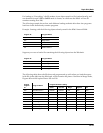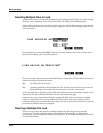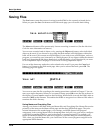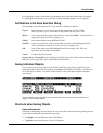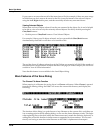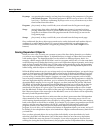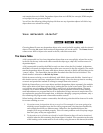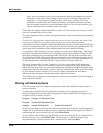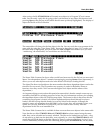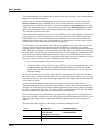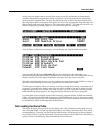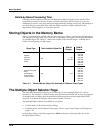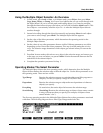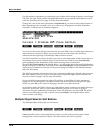
Basic Disk Mode
Saving Files
13-29
and samples that are in RAM. Dependent objects that are in ROM (for example, ROM samples
or keymaps) do not get saved to disk.
You will see the following dialog displayed if there are any dependent objects in RAM of any
objects that were selected for saving:
||||||||||||||||||||||||||||||||||||||||
||||||||||||||||||||||||||||||||||||||||
||||||||||||||||||||||||||||||||||||||||
Save|dependent|objects?|||||||||||||||||
||||||||||||||||||||||||||||||||||||||||
||||||||||||||||||||||||||||||||||||||||
||||||||||||||||||||||||||||||||||||||||
|||||||||||||||||||||Names|||Yes||||No||
Choosing Yes will cause any dependent objects to be saved in the file together with the selected
objects. Choosing No means that unselected dependents will not be saved. The Names button
creates a new kind of object to be stored in the file, called the name table.
The Name Table
A file’s name table is a list of any dependent objects that were not explicitly selected for saving
in the file. Each entry in the name table contains the object type, object ID, and the name of a
dependent object.
A file’s name table is used by the K2661 at only one time: when the file is loaded. At that time,
the K2661 will search for dependent objects that were not saved in the file originally. The search
matches dependent objects by name with objects that are already in RAM, and links them to the
“parent” object. The name-table data are then discarded when the file load is finished. This
search feature is referred to as Relink-by-Name.
Relink-by-name can help you work efficiently with K2661 objects and disk files. Careful use of
this feature can save you many megabytes of disk storage. It can also free up time for working
on music and production instead of waiting for sample data to be resaved.
Relink-by-Name allows you to save objects and their dependent objects separately (in multiple
files) and be able to link them up later on by loading the files in the correct order. This can be a
very efficient way of working with the K2661’s many levels of dependent objects. The most
common way in which Relink-by-Name speeds up development of sounds is when making
small adjustments to a program that has as its dependents a large amount of sample data. You
can separate the program and sample data, so that after changing a program parameter, only a
file containing the program and a name table need be resaved.
When loading a file that contains a name table, the following rules should be observed in order
for correct relinking to occur.
1. Use unique names for dependent objects at every level. For example, if you were going to be
relinking several samples from one file with a program and a keymap from another file,
each sample should have a different name. Otherwise, the dependent objects (the
samples) will not get relinked properly. This will create problems such as keymap ranges
that don’t play as they are supposed to.
2. The dependents to be relinked must already be loaded. Otherwise they will not be found and
relinked when the file containing the parent objects is loaded. This constraint on the order
of file loading can be made easier to work with by using the macro file feature (described



